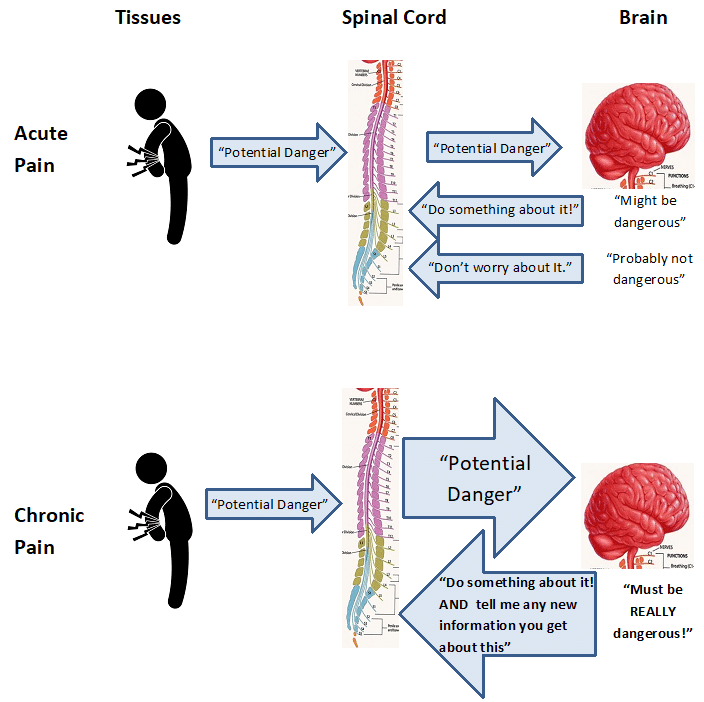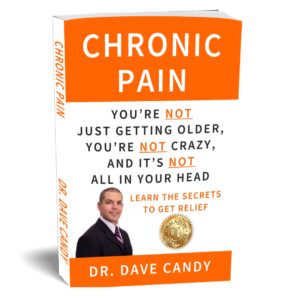What Do You Do If You Have Left Arm and Leg Pain?
Or right arm and right leg pain for that matter?
Someone asked this question in the comments of one of my YouTube video recently.
I thought it would be good to answer that question in the video below.
Although it's not incredibly common to have both arm and leg pain on the same side of the body, it can be incredibly frustrating and scary for those who do.
Many patients with right or left arm and leg pain will go from doctor to doctor and test to test trying to find the cause only to end up stumped and broke from all the medical bills they've accumulated.
Furthermore, some may even get told by family member or doctors that the pain is "all in their head".
Disclaimer: Do not use this as a substitute for getting help from a healthcare professional in your area.
What Causes Left Arm and Leg Pain?
Let's start with the question from the YouTube video:
Hi Dr Candy, I need your help please. I currently get pain that radiates down my left arm to my left hand, when this happens I also get a radiating pain down my left leg at the same time. The pain is always down my left leg and left arm. When the pain occurs it is always arm, hand, leg. When I get the pain I often get terribly painful spasming in my left foot and left arm. I have suffered from this for over 20 years. I have been for MRI and CT scans full body including brain 6 times over the 20+ years and nobody can find a problem. The pain happens for an hour then it completely goes away like it never happened for an hour. The duration of this pain varies every time. The pain comes and goes many times each day. I would love to hear your thoughts on this. Thank you in advance.
Chronic Left Arm and Leg Pain
When you have arm and leg pain on one side of the body, it's a good idea to do your due diligence and get it examined by a healthcare professional.
In this case though the person's arm and leg pain is chronic.
It has been going on for a long time and has been obviously checked out through MRIs and CTs.
With negative findings on multiple tests, it is unlikely that there is a lesion or injury of the spinal cord or nervous system.
However, what can happen is a sensitization of the spinal cord.
This is sometimes known as central sensitization or nociplastic pain.
The Confusing Part About Arm and Leg Pain
Normally, the nerves to your hand and arm come out of your neck and the nerves to your leg and foot come out of your lower back.
So there shouldn't usually be a lot of crossover.
However, the nerves from the upper body and lower body travel side by side through your spinal cord in the neck as they're ascending up into the brain.
Spinothalamic Tract (Pain and Temperature Sensation)
Pain and temperature and sharp dull sensations travel through a part of your spinal cord known as the spinothalamic tract.
This image from the University of Minnesota's website shows a really good illustration of the spinothalamic tract.
Sensory information comes into the back part of your spine in a part called the dorsal horn.
Pain and temperature information then crosses over to the opposite side of the spinal cord then that information ascends up to the brain in the spinothalamic tract.
As you can see, at the neck level, the cervical fibers, thoracic fibers, lumbar fibers, and sacral fibers all run side by side. However, they still retain their original information.
Chronic Pain Can Cause Cross-Talk
In the case of chronic pain though, information can start to cross from one tract to another.
Dormant nerve fibers between these pathways become active so that you get "cross talk".
As a result, instead of the arm nerves only projecting to the arm sensory area in the brain, it may start to project onto the leg area as well.
The result is that as the sensitivity of your nervous system increases, the pain spreads and becomes harder to localize.
That doesn't mean the injury or tissue damage is getting worse though.
It just means the "danger alert system" has become more sensitive.
It's Not All In Your Head
That doesn't mean that that you're just making the pain up, or that it's "all in your head" though.
There usually is a physical cause.
However, that physical cause may not necessarily be something that is harmful or damaging.
Pain is really your brain's way of responding to actual or perceived danger.
Pain isn't a signal of tissue damage that comes from your body to your brain.
That is referred to as nociception.
Pain is your brain's response to that signal in order to protect you from potential danger or harm.
Hyperalgesia vs Allodynia
When you've had pain for a long time, your spinal cord gets more efficient at sending nociceptive signals to your brain.
Hyperalgesia
Hyperalgesia means something that should be perceived as painful that feels more painful than it should be because the nervous system has gotten more sensitive.
Allodynia
You can also have something called allodynia. Allodynia means something such as light touch that shouldn't normally be perceived as painful that becomes painful.
This happens when there's "crosstalk" between the pathways that carry light touch and noxious sensory information.
Widespread Pain in Arm and Leg
Additionally, in the spinothalamic tract at the neck, information from the lower body, trunk, and upper body run next to one another.
If crosstalk happens between these normally distinct pathways, signals from the left hand, for example, may be perceived as widespread pain in the left arm and leg.
More Worry = More Pain
The longer the pain has gone on, your brain starts to worry more about the problem.
The more worried your brain is, the more it asks your body to send it information. It actually makes your receptors and your spinal cord more sensitive to sending information up to the brain.
Because the pain seems to be getting worse, your brain in turn worries even more about it, which causes further nerve sensitization. It becomes sort of a snowball effect.
How To Relieve Left Arm and Leg Pain
Relieving pain in our arm and leg on one side of your body isn't as easy at taking a pill or doing an exercise.
Ultimately, you have to desensitize your nervous system.
This is NOT an easy task!
However, here are a few strategies to relieve arm and leg pain:
1. Do your due diligence. Make sure that it's not actually a lesion or a problem with the nervous system. Truthfully, if there was an injury to the spinothalamic tract, you'd actually probably expect lack of pain and temperature sensation. However, diagnostic imaging such as an MRI can be helpful to rule out serious problems.
2. Reframe the sensations. Once you've assured that there's not a structural nervous system issue, reassure yourself of this. When you feel pain in your arm and leg, reassure yourself that what you're experiencing is due to sensitive nerves and that you're not actually in danger of harm.
3. Graded exposure. Gradually introduce yourself to painful stimuli in a safe manner. For example, if your hand is very tender to touch, rub it with a soft cloth. Cognitively, you know this is not harmful, and it helps your brain dissociate the physical sensation from potential harm. You could do this same thing with activities that you're fearful of doing due to pain.
This isn't going to magically fix arm and leg pain overnight.
You can't just sing Kumbaya and expect everything to go away. However, by doing these things consistently, your nervous system gradually gets less and less and less sensitive.
Need More Help For Arm and Leg Pain?
To learn more about the nature of chronic pain, plus additional tips to relieve it, check out my book "Chronic Pain: You're Not Just Getting Older, You're Not Crazy, and It's Not All in Your Head."
Furthermore, if you live in the St. Louis area need treatment for chronic pain, just tap the button below to request an appointment.




